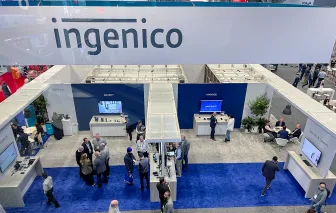With more flexibility and opportunity for innovation, Android payment terminals are bound for more deployment throughout Canada.
Merchants and consumers are accustomed to a payment terminal accepting EMV chip cards, contactless cards, mobile wallets, and gift cards. However, with the finite capabilities of legacy payment terminals, merchants are missing an opportunity to use a common touchpoint to enhance customer experiences with expanded functionality. Android payment terminals make it possible.
Why Android Payment Terminals?
The Android operating system is known for flexibility. Without the barriers to innovation, extension, or integration that exist with proprietary systems, Android makes it easier to develop apps, customize systems, and scale.
Also, as the most popular OS in the world, the Android user interface (UI) is familiar to many consumers and retail employees. That familiarity can enhance payment experiences with ease of use for customers. It also improves employee experiences with a short onramp to learn how to use devices and build them into their workflows.
Furthermore, Android payment terminals are highly secure. The Android OS takes a multilayered approach to security, accelerating Payment Card Industry (PCI) compliance for developers as they work to meet each standard and regulation with their solutions.
A Platform that Meets Current - and Future - Demands
Android’s intrinsic features provide the foundation for payment platforms that support new terminal capabilities. For example, a payment technology company can create an ecosystem with a variety of terminal options and an app store that offers a broad range of options, such as buy now, pay later (BNPL), QR code, or cryptocurrency payments in-store. Integrating with this platform allows acquirers to offer their clients value-added services through the platform, such as digital receipts, feedback collection, and loyalty rewards programs, that contribute to customer-pleasing experiences. Furthermore, merchants can choose solutions that help them protect their businesses, such as point-to-point encryption (P2PE) and fraud protection solutions. And it can all be accessible from one Android payment terminal.
Managing devices can also be easier with an Android platform. Automatic terminal updates, remote monitoring, and activating new payment methods are easier for payment solution providers. And new capabilities like remote key injection are also possible. Additionally, it’s possible to allow merchants to request maintenance directly from the terminal.
Benefits to the Payments Industry
Although the benefits to acquirers and payment solution providers are undeniable, a shift to Android payment solutions can also help bring new options to market faster. First, because Android is a popular OS and it uses Java, many developers have the expertise necessary to write apps for it. Additionally, developer tools for Android are mature and readily available. In an era of scarce developer resources, Android increases the chances that a company can find experienced resources to create the point of sale apps their customers demand.
Additionally, Android’s open nature allows developers to replicate user experiences from one type of device to another. They can create cohesive ecosystems of payment terminals, self-service kiosks, and mobile devices that offer consumers consistent user experiences however they interact with a business.
Canada Is Moving into the Future with Android Payment Terminals
The flexibility, extensibility, security, and innovation opportunities that Android payment platforms offer are generating interest throughout the country among acquirers, merchants, and, increasingly, developers that want to be a part of the new way to bring new capabilities to their clients.
Are you ready for Android payment terminals? Contact us to learn more.











